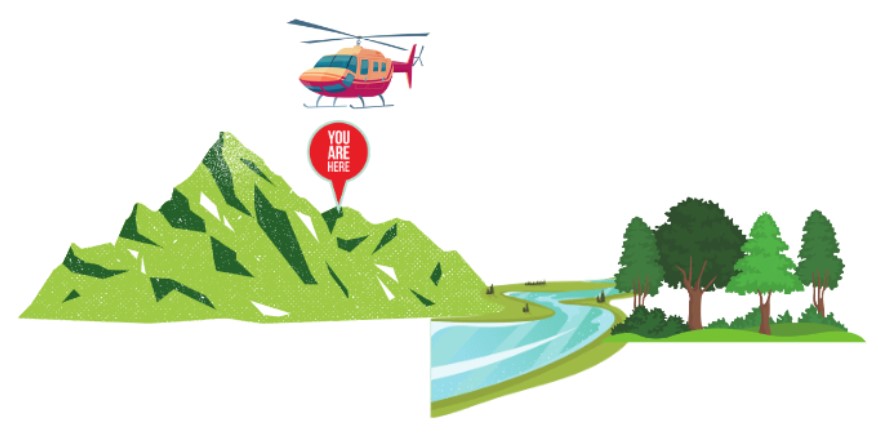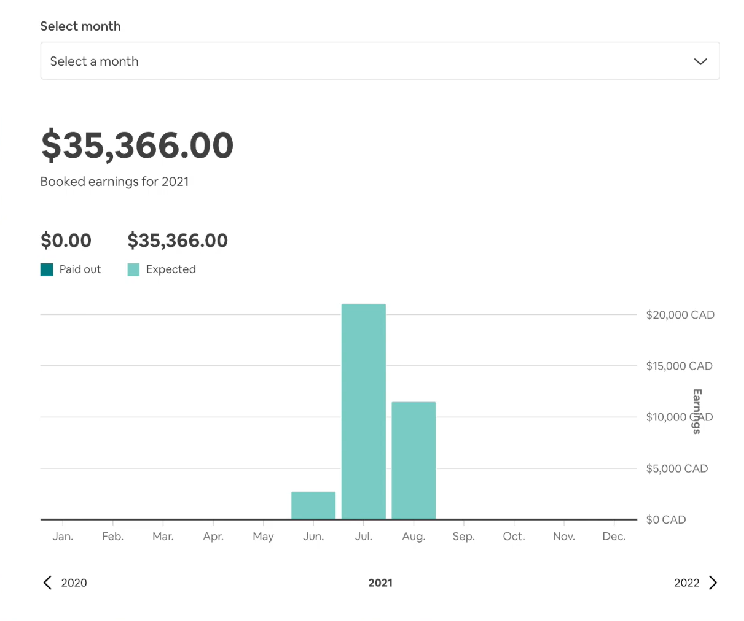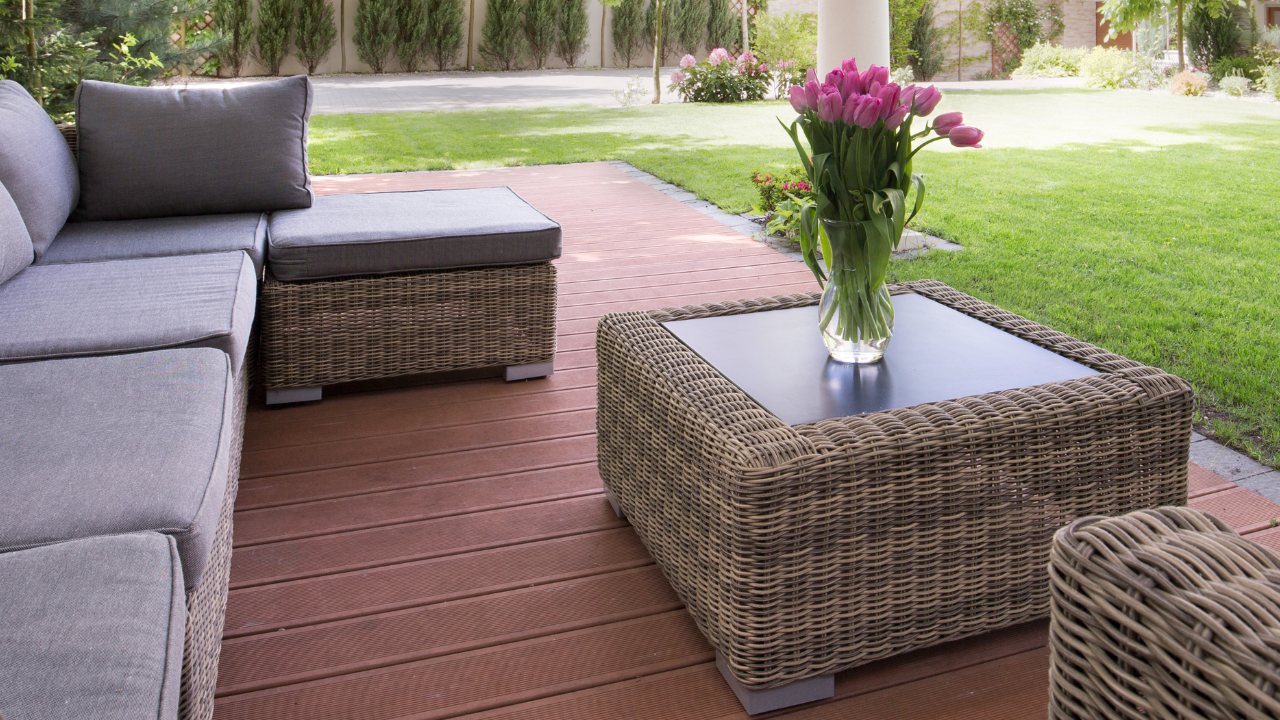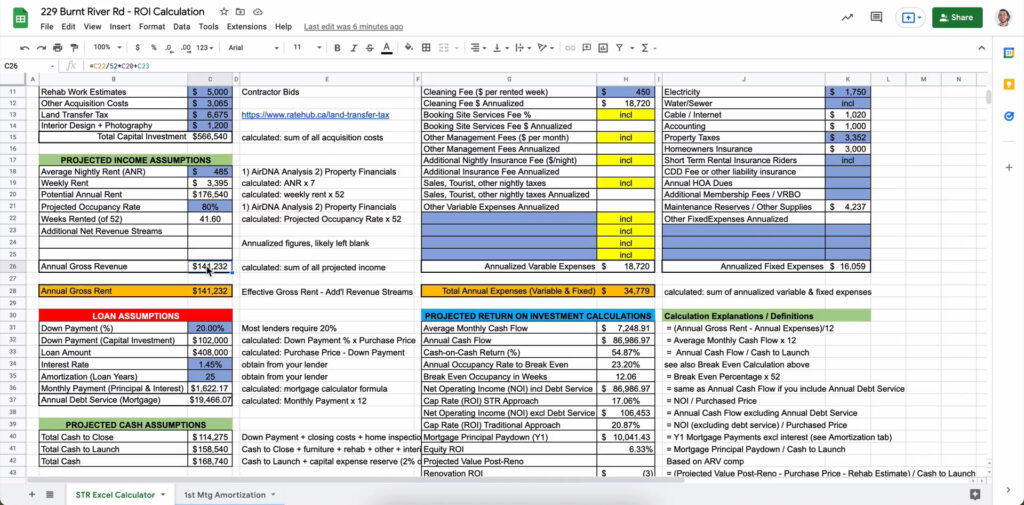Developing an investment strategy is often overwhelming or exciting, depending on your personal style.
Many active investors appreciate the rush of day trading hot stocks. Others prefer to hand off the responsibility to a manager or simply buy an index fund.
In the real estate space, you have the same choices. Do you want to make cash offers to flip a property? Or do you enjoy the idea of a turn key property for long term rental?
With a lot of choices, if you have some money saved up, how should you invest it? Do you prefer appreciation, equity build up, or cash flow?
Luckily, I believe you can have the best of all worlds with Airbnbs in your portfolio.
Let’s dive into your Airbnb investment strategy.

How to invest in Airbnb
For most investors, there are two main ways you can invest in Airbnbs.
The first way is passively.
Yes, you can provide the cash for the property (whether in full or the down payment), rehab, and furnishings to a partner. Your partner’s job would be to find the property, manage the rehab, and manage it as an Airbnb.
Typically, this arrangement is between two parties. One is passive (the one providing the money, i.e. you), and one is active (your partner doing the work). You put up the money to get the business started. The active investor puts up the time and expertise to get the business started.
In the end, deals can be structured in many different ways. Often, it’s 50/50 in a situation like this.
Any cash flow (extra profit) generated by the property is split between both investors. You can choose to set up a preferred return – where you get back all or most of the starting money before cash flow is split.
Equity is also split between the parties after your original investment is repaid.
Let’s take a generalized example. Let’s say you have $200,000 to invest, but you don’t have the time to spend putting it all together and managing it.
Your partner finds a property for $500,000. You get a mortgage on the property and put in the down payment. It’s often 20%, so $100,000.
Then, you’d like to build in a safety net. So you look to force some appreciation. In other words, the property could use some work. It will make it more valuable.
You put $65,000 into strategic renovations.
Strategic renovations are updates that will get you to that maximum value and be valuable to future guests or the performance of the property.
The agent or another local investor can tell you what the after rehab value (ARV) would be. In other words, what’s the expected maximum value this home could be in tip-top shape?
Quick example: adding a bathroom can often help increase the ability to comfortably keep more guests.
Then, you set aside $10k for emergencies. With the remaining $25k you buy furniture, decorations, and amenities your guests would want.
This whole time, you’re just sitting back. The active partner is choosing, managing, and placing.
The active partner creates the listing, manages pricing and guest communications, and handles cleaning and maintenance teams.
Each month or quarter, you split the profits.
When it’s time for a refinance (thanks to the extra value created), you get paid back some or all of the $200k they put down in the first place.
And, as you might’ve guessed, the second way is as an active investor.
Active investors need time, expertise, and money. You can get money from a passive investor or use your own money and loan.
Often, the draw for investors is the ability to start a business that has elements of hospitality, real estate, and owning a business all in one.
Let’s dig deeper into that now.
How to start an Airbnb business as an investor
Here are the basic steps to starting an Airbnb investing business:
- Get access to money and expertise
- Decide on a market
- Create systems for off-market properties or use an agent
- Purchase a great deal
- Renovate and decorate
- Launch and maintain
- Automate and outsource
Let’s touch on each.
1. Get access to money and expertise
Get enough cash or a partner to provide for any down payment, renovations, furnishings, and amenities.
There are many ways to get money, and there are more people than you think with access to enough.
The expertise is a little harder to come by. One option is to put time and energy into learning from your own mistakes. Or you can stand on the shoulders of giants, as they say, and learn from experts.
Watch some YouTube videos, or join a local real estate club or real estate mastermind.
Click here if you want to learn the top three things you need to be successful as an Airbnb investor.
2. Decide on a market
Be careful not to overanalyze here. Ultimately, you want to pick a solid handful of markets you like.
Then, do some digging.
You’ll want to look into things like:
- Regulations
- Taxes
- Number of existing short term rentals
- How close they are to a major market
- How much they rely on tourism
- Prices of homes in the area
- Ability to find cleaners and maintenance people
- How familiar you are with the area
- How much you like the area
The usual long term demographics like job growth, economic diversity, etc aren’t as critical with short term rentals.
Once you decide which one is the best, put your blinders on. Focus now only on your new market.
It’s key to remember that no market is going to be the perfect market. There’s no market where you can always get properties for half of their value.
No matter what market you choose, it still takes time, energy, and expertise to find that great investment property.
That’s what’s great about short term rentals, though. You don’t need 100 or even 20 to replace a full time income. Usually, 5-10 solid short term rentals can replace the average full time income on cash flow alone.
With a market chosen, it’s time to make a bunch of phone calls. Find and vet your Power Team – cleaners, agents, plumbers, handymen, and so on.
3. Create systems for off-market properties or use an agent
With your market now chosen, develop a way to get off-market properties. No matter what the market is doing, it’s always a great time to buy an off-market property.
This means instead of buying from an agent, you buy directly from someone who wants to sell their home. There are many reasons why someone would want to do this instead of with an agent.
For example, sometimes there’s a death in the family. Or divorce. Or disease. Lot’s of Ds.
4. Purchase a great deal
Pretty self explanatory. This one requires knowledge of analyzing short term rentals as an investment.
Keep reading for the section below on Airbnb investment analysis.
There’s always a set of numbers that makes a property a good deal. Not every seller agrees to the terms, but a good deal boils down to good numbers.
To make it past the back-of-the-napkin phase, our properties have to have an expected cash-on-cash of 15% and break even in a worst case scenario.
5. Renovate and decorate
Make any necessary strategic renovations. This means very specific updates or upgrades to increase the value just enough and to draw more of your ideal guests in.
For brand new investors, we advise you look into cosmetic updates. Sure, it removes the ability build equity into your portfolio quickly. But it shortens your timeline by months and gives you an instant boost of confidence to have a property listed.
6. Launch and maintain
When you start a new listing, Airbnb wants to make sure you start off right. They want you to see success early to keep you on the platform.
So they plop you right into the mix. “Halfway up the mountain” I like to say. You get shown to a lot of potential guests, and many of them end up booking!

For example, within 48 hours of launching a property I had $35,366 in bookings.

It’s also a test.
See, Airbnb only makes money when someone books. So it’s in their best interest to “promote” (i.e. rank higher in searches) the properties most likely to get bookings.
When you’re set halfway up the mountain, you need to perform or you’ll begin to slide back down. Suddenly you’re across the river and lost in the woods. And clawing your way back up the mountain is very difficult.
Once you’re through your great launch, it’s all about maintaining your guests, cleaners, and maintenance teams.
7. Automate and outsource
For most investors we talk to, they’re using short term rentals as a means to an end. They’re looking for cash flow and the equity.
Some are looking for a simple asset they can use in the winter. And that’s fine.
But most we work with want to retire from their job, or retire their spouse. To do that, we can use the equity to keep the ball rolling. We can build more wealth.
To do that, we need to automate and outsource.
It’s no secret that running an Airbnb is more recurring work than a long term rental. But with the right systems, the amount of work you see is the same.
Someone has to do the work, but it doesn’t have to be you. And with the incredible cash flow in Airbnbs, you have the cushion to hire great teams.
It’s possible to hire property management companies to run your properties. But at 20% per property, after five properties, you could easily be giving away $100k in fees.
And I can say from experience that building your own in-house system, it’s really more like 5% of your revenues going to the system. That’s an extra $75k in your pocket in this scenario.
Is an Airbnb a good investment?
It’s not just how to buy an Airbnb property. The discussion is often about the overall market. Is now a “good time” to buy?
Because if we’re looking to develop a strategy, part of that is timing, right?
For a lot of people, they use one single factor, like a high interest rate, to say it’s a bad time.
But there’s always deals, no matter the time. The market overall is more complicated than that.
And I can prove it to you.
Would you buy a house with a 40% interest rate?
Sure you would, if the rest of the numbers made sense. If you were offered a $500k house for $10k, that’s a great deal and you’d take it, even if interest rates were 40%.
So the conclusion is to make sure the numbers work, period. The numbers will be different as time goes on, but percentage return on investment goals don’t change. You’re still looking for a great cash on cash percentage.
Now, regardless of what the market’s doing, what is the best way to use money? Airbnb, as it happens, has phenomenal cash flow abilities.
Long term rental investors are ecstatic with 5 or 7% cash on cash. But it’s not uncommon to find double that with Airbnbs. And to be fully transparent, my investment strategy starts at 15% cash on cash return.
Airbnb investment analysis
A major part of successfully investing (in anything) is being able to analyze the investment.
In our case, we’re analyzing the ability of the asset (the property) to provide a return (rental income) that’s greater than the expenses (maintenance, capital expenditures, sundries, and more).
I’ve found this to be one of the bigger obstacles in a strategy, especially if you’re coming from a long term rental background.
You’re familiar with one type of analysis, but Airbnb investment analysis is different.
The costs are largely the same, such as utilities. Insurance can be a bit different, because there are companies that provide insurance specifically for short term rentals.
The loan and closing type costs are largely the same.
So that leaves the income. We need a solid way to discover how much income a property will bring in.
If it won’t make enough ROI, why bother with the strategy at all?
We use two tools for our members: AirDNA and STR Insights.
AirDNA allows you to export revenue data that fits the filters of your exact property. For example, you can know what three bedroom properties in your market that holds seven or eight people will earn.
It now exports data from the last five years. It’s important to check the trends across the trailing twelve months, as well as over the previous years. In many rural markets especially, COVID provided a massive boost to revenue.
Our goal is to ensure two things before continuing on: will the property provide at least 15% cash-on-cash return in a normal situation, and will this property at least break even in a worst case scenario (i.e. if we perform badly in a repeat of the historically lowest year).
For access to our ROI spreadsheet, click here to watch our free training video and get sent the spreadsheet, free.
We can cross reference this with existing properties. Because of the way the months are collected and organized on AirDNA, we need to verify the numbers.
AirDNA has a top properties section, to see what the best can do. But we can also make sure a full time property (one that is listed for 300 days a year or more) that fits our criteria has made something similar to that.
STRInsights can also be valuable to cross reference. It’s a bit pricier, but great for investors. What makes it magical is the breakdown by bedrooms, the removal of part time listings in the data, and filtering by percentile on the map.
Our members get access to this through their personal success manager. We can use the filtering to look for a really good market.
Conclusion
Our ability to successfully invest in Airbnbs comes down to many moving pieces. But being able to develop your Airbnb investment strategy overall is made easier through a solid foundation of analysis, systems, and the people around you.
If you’d like help building out every element of your Airbnb business, click here to watch our free mini-webinar about the three things every successful Airbnb investor needs.


